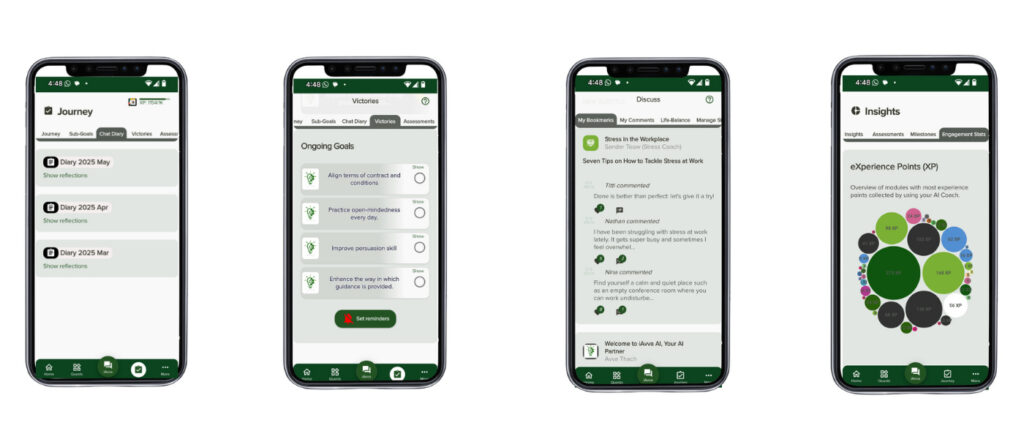Revenue Cycle Management (RCM) technology is a critical component of the healthcare industry, serving as the backbone for financial operations within healthcare organizations. RCM encompasses the entire process of managing claims, payment, and revenue generation, from the initial patient encounter to the final payment received. This technology integrates various functions, including patient registration, insurance verification, billing, and collections, ensuring that healthcare providers can efficiently manage their financial health.
By leveraging RCM technology, organizations can streamline their operations, reduce costs, and ultimately enhance their revenue streams. The importance of RCM technology cannot be overstated, especially in an era where healthcare costs are rising and reimbursement models are evolving. With the shift towards value-based care, healthcare providers must adopt robust RCM solutions that not only facilitate timely payments but also ensure compliance with regulatory requirements.
RCM technology enables organizations to track and analyze their financial performance, identify areas for improvement, and implement strategies that enhance revenue collection. As such, understanding the intricacies of RCM technology is essential for healthcare leaders aiming to optimize their financial operations and improve overall organizational efficiency.
Key Takeaways
- RCM technology streamlines healthcare revenue processes from billing to payment collection.
- Automation in RCM enhances accuracy and speeds up revenue collection cycles.
- Integration with EHR systems improves data flow and reduces administrative burdens.
- Analytics and reporting tools help identify revenue opportunities and optimize financial performance.
- Addressing compliance and managing denials effectively are critical for maximizing revenue with RCM technology.
Implementing RCM Technology in Healthcare Organizations
The implementation of RCM technology in healthcare organizations requires a strategic approach that aligns with the organization’s goals and objectives. It begins with a thorough assessment of existing processes and systems to identify gaps and inefficiencies. This assessment should involve key stakeholders from various departments, including finance, billing, and clinical operations, to ensure a comprehensive understanding of the organization’s needs.
Once the assessment is complete, organizations can select an RCM solution that best fits their requirements, taking into consideration factors such as scalability, ease of integration, and user-friendliness. Training and change management are critical components of successful RCM technology implementation. Healthcare organizations must invest in training programs that equip staff with the necessary skills to navigate the new system effectively.
This includes not only technical training on the RCM software but also education on best practices for revenue cycle management. Additionally, fostering a culture of adaptability and openness to change is essential for overcoming resistance and ensuring that all team members are on board with the new processes. By prioritizing these elements during implementation, healthcare organizations can maximize the benefits of their RCM technology investment.
Leveraging Automation for Improved Revenue Collection

Automation plays a pivotal role in enhancing revenue collection within healthcare organizations. By automating repetitive tasks such as claims submission, payment posting, and follow-up on outstanding balances, organizations can significantly reduce administrative burdens and minimize human error.
Automation tools can also facilitate real-time tracking of claims status, enabling organizations to identify issues early in the process and take corrective action before they escalate. Moreover, automation enhances communication between healthcare providers and payers. Automated systems can generate alerts for denied claims or underpayments, allowing organizations to address these issues promptly.
This proactive approach to revenue collection can lead to improved cash flow and reduced days in accounts receivable. Additionally, automated reminders for patients regarding outstanding balances can enhance collections while improving patient satisfaction by keeping them informed about their financial responsibilities. In this way, leveraging automation not only streamlines operations but also contributes to a healthier bottom line.
Streamlining Billing and Coding Processes with RCM Technology
| Metric | Before RCM Technology | After RCM Technology | Improvement |
|---|---|---|---|
| Claim Submission Time | 7 days | 2 days | 71% faster |
| Claim Denial Rate | 15% | 5% | 66% reduction |
| Billing Accuracy | 85% | 98% | 15% increase |
| Revenue Cycle Time | 45 days | 20 days | 56% faster |
| Patient Payment Collection Time | 30 days | 12 days | 60% faster |
| Staff Productivity (Claims Processed per Employee) | 50 claims/day | 90 claims/day | 80% increase |
Billing and coding are integral components of the revenue cycle that directly impact an organization’s financial performance. RCM technology streamlines these processes by providing tools that enhance accuracy and efficiency. Advanced coding software can assist coders in selecting the appropriate codes based on clinical documentation, reducing the likelihood of errors that can lead to claim denials or delays in payment.
Furthermore, RCM systems often include built-in compliance checks that ensure coding practices align with current regulations and payer requirements. In addition to improving accuracy, RCM technology can expedite the billing process by automating invoice generation and distribution. This not only shortens the time it takes for patients to receive their bills but also facilitates quicker payment processing.
By integrating billing and coding functions within a single platform, healthcare organizations can achieve greater visibility into their revenue cycle performance. This holistic view allows for better decision-making and resource allocation, ultimately leading to improved financial outcomes.
Enhancing Patient Engagement and Payment Collection
Patient engagement is a crucial aspect of effective revenue cycle management. Engaging patients throughout their healthcare journey can lead to higher satisfaction rates and improved payment collection outcomes. RCM technology offers various tools to enhance patient engagement, such as online portals that allow patients to access their health information, view bills, and make payments conveniently.
By providing patients with easy access to their financial responsibilities, organizations can foster a sense of ownership over their healthcare costs. Additionally, personalized communication strategies can be implemented through RCM systems to keep patients informed about their financial obligations. Automated reminders for upcoming payments or outstanding balances can encourage timely payments while reducing the administrative burden on staff.
By prioritizing patient engagement in the revenue cycle process, healthcare organizations can create a more positive experience for patients while simultaneously improving their financial performance.
Utilizing Analytics and Reporting Features for Revenue Optimization

Analytics and reporting features within RCM technology are invaluable for optimizing revenue generation efforts. These tools provide healthcare organizations with insights into key performance indicators (KPIs) such as days in accounts receivable, claim denial rates, and overall revenue trends. By analyzing this data, organizations can identify patterns and areas for improvement within their revenue cycle processes.
For instance, if a particular service line consistently experiences high denial rates, targeted interventions can be implemented to address the underlying issues. Moreover, predictive analytics can be leveraged to forecast future revenue trends based on historical data. This allows organizations to make informed decisions regarding resource allocation and strategic planning.
By utilizing analytics effectively, healthcare organizations can not only enhance their operational efficiency but also position themselves for sustainable growth in an increasingly competitive landscape.
Integrating RCM Technology with Electronic Health Records (EHR) Systems
The integration of RCM technology with Electronic Health Records (EHR) systems is essential for creating a seamless flow of information throughout the revenue cycle. When these systems work together, healthcare organizations can ensure that clinical documentation aligns with billing requirements, reducing the risk of claim denials due to incomplete or inaccurate information. This integration facilitates real-time access to patient data, enabling billing staff to verify insurance eligibility and benefits at the point of service.
Furthermore, integrated systems enhance communication between clinical and administrative teams. Clinicians can document services rendered in real-time, which automatically updates billing records within the RCM system. This not only streamlines workflows but also improves accuracy in coding and billing processes.
By fostering collaboration between clinical and administrative functions through integrated technology solutions, healthcare organizations can optimize their revenue cycle management efforts.
Addressing Compliance and Regulatory Requirements with RCM Technology
Compliance with regulatory requirements is a significant concern for healthcare organizations as they navigate an increasingly complex landscape of laws and regulations. RCM technology plays a vital role in ensuring compliance by incorporating features that help organizations adhere to industry standards such as HIPAA and CMS guidelines. Automated compliance checks within RCM systems can flag potential issues before they become problematic, allowing organizations to take corrective action proactively.
Additionally, RCM technology provides audit trails that document all transactions within the revenue cycle process. This transparency is essential for demonstrating compliance during audits or investigations by regulatory bodies. By leveraging RCM technology to address compliance requirements effectively, healthcare organizations can mitigate risks associated with non-compliance while maintaining trust with patients and payers alike.
Managing Denials and Appeals Effectively with RCM Technology
Denial management is a critical aspect of revenue cycle management that directly impacts an organization’s financial health. RCM technology provides tools for tracking denials systematically and analyzing their root causes. By identifying patterns in denials—such as specific payers or service lines—organizations can implement targeted strategies to reduce future occurrences.
This proactive approach not only improves cash flow but also enhances relationships with payers by addressing issues collaboratively. Furthermore, RCM systems often include features that streamline the appeals process for denied claims. Automated workflows can guide staff through the necessary steps for submitting appeals while ensuring that all required documentation is included.
By simplifying this process, organizations can increase their chances of successfully overturning denials and recovering lost revenue. Effective denial management through RCM technology ultimately contributes to a healthier bottom line for healthcare organizations.
Maximizing Revenue with RCM Technology in Specialty Practices
Specialty practices face unique challenges when it comes to revenue cycle management due to the complexity of services provided and varying reimbursement models from payers. RCM technology tailored for specialty practices can help address these challenges by offering specialized coding tools that align with specific service lines. This ensures accurate billing while minimizing claim denials related to coding errors.
Additionally, specialty practices often require more detailed documentation to support medical necessity for certain procedures or treatments. RCM technology can facilitate this process by providing templates or prompts that guide clinicians in capturing essential information during patient encounters. By maximizing revenue through accurate coding and documentation tailored to specialty services, practices can enhance their financial performance while continuing to deliver high-quality care.
Future Trends and Innovations in RCM Technology for Revenue Maximization
As the healthcare landscape continues to evolve, so too will the technologies that support revenue cycle management efforts. Future trends in RCM technology are likely to focus on further automation and artificial intelligence (AI) integration to enhance efficiency and accuracy in billing processes.
Moreover, as telehealth becomes increasingly prevalent, RCM technology will need to adapt to accommodate new billing models associated with virtual care services. This includes developing solutions that seamlessly integrate telehealth encounters into existing revenue cycles while ensuring compliance with payer requirements. By staying ahead of these trends and embracing innovations in RCM technology, healthcare organizations can position themselves for sustained revenue maximization in an ever-changing environment.
In conclusion, Revenue Cycle Management technology is an indispensable tool for healthcare organizations seeking to optimize their financial operations. By understanding its components and implementing effective strategies across various aspects of the revenue cycle—from billing and coding to patient engagement—organizations can enhance their revenue collection efforts while ensuring compliance with regulatory requirements. As the industry continues to evolve, embracing future trends will be crucial for maximizing revenue potential in an increasingly competitive landscape.
Revenue cycle management technology is crucial for optimizing financial processes in healthcare organizations. For insights into how digital transformation can enhance operational efficiency, you may find the article on digital transformation consulting success stories particularly relevant. This article explores various case studies that highlight the impact of technology on improving revenue cycles and overall business performance.
FAQs
What is revenue cycle management technology?
Revenue cycle management (RCM) technology refers to software and tools designed to streamline and automate the financial processes involved in healthcare billing, from patient registration to final payment collection.
How does revenue cycle management technology benefit healthcare providers?
RCM technology improves accuracy in billing, reduces claim denials, accelerates payment cycles, enhances patient experience, and provides better financial reporting and analytics for healthcare providers.
What are the key features of revenue cycle management technology?
Key features typically include patient registration, insurance verification, charge capture, claims submission, payment posting, denial management, and reporting dashboards.
Is revenue cycle management technology suitable for all types of healthcare organizations?
Yes, RCM technology can be tailored to fit various healthcare settings, including hospitals, clinics, physician practices, and specialty care providers.
How does revenue cycle management technology handle insurance claims?
The technology automates the submission of claims to insurance companies, tracks their status, identifies errors or denials, and facilitates timely resubmission or appeals.
Can revenue cycle management technology integrate with electronic health records (EHR) systems?
Most modern RCM solutions are designed to integrate seamlessly with EHR systems to ensure accurate data exchange and improve workflow efficiency.
What role does revenue cycle management technology play in compliance?
RCM technology helps healthcare providers comply with regulatory requirements by maintaining accurate records, ensuring proper coding, and supporting audit trails.
How does revenue cycle management technology improve patient billing?
It provides clear, itemized bills, offers multiple payment options, and can automate payment reminders, enhancing transparency and patient satisfaction.
Is training required to use revenue cycle management technology?
Yes, users typically require training to effectively operate RCM software, understand workflows, and maximize the technology’s benefits.
What trends are shaping the future of revenue cycle management technology?
Emerging trends include the use of artificial intelligence, machine learning for predictive analytics, cloud-based solutions, and enhanced patient engagement tools.





















Leave a Reply